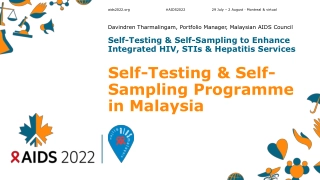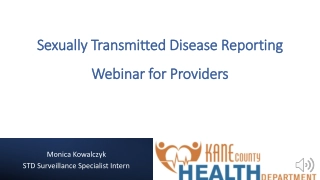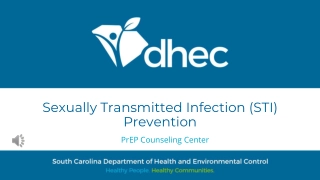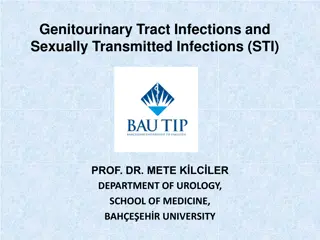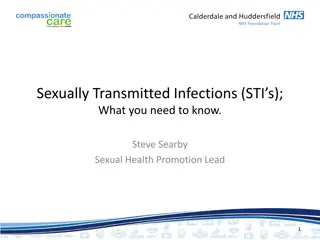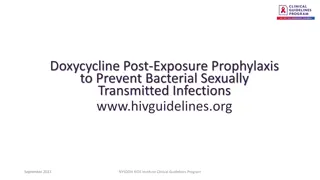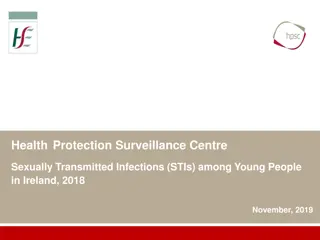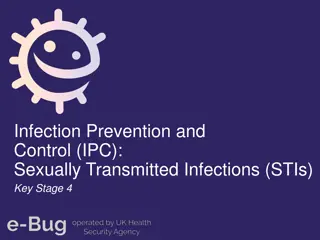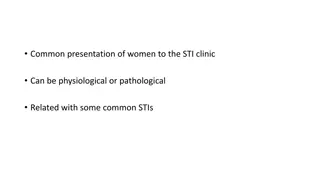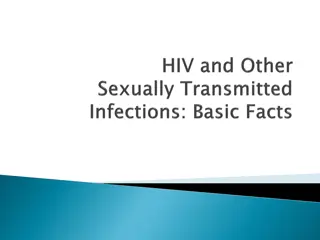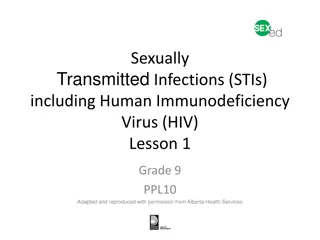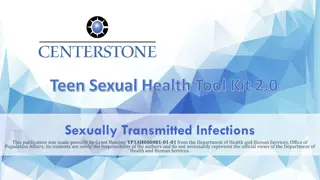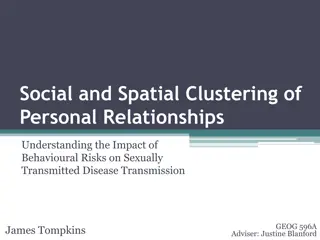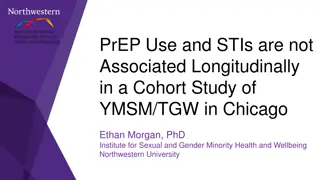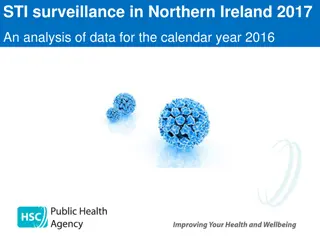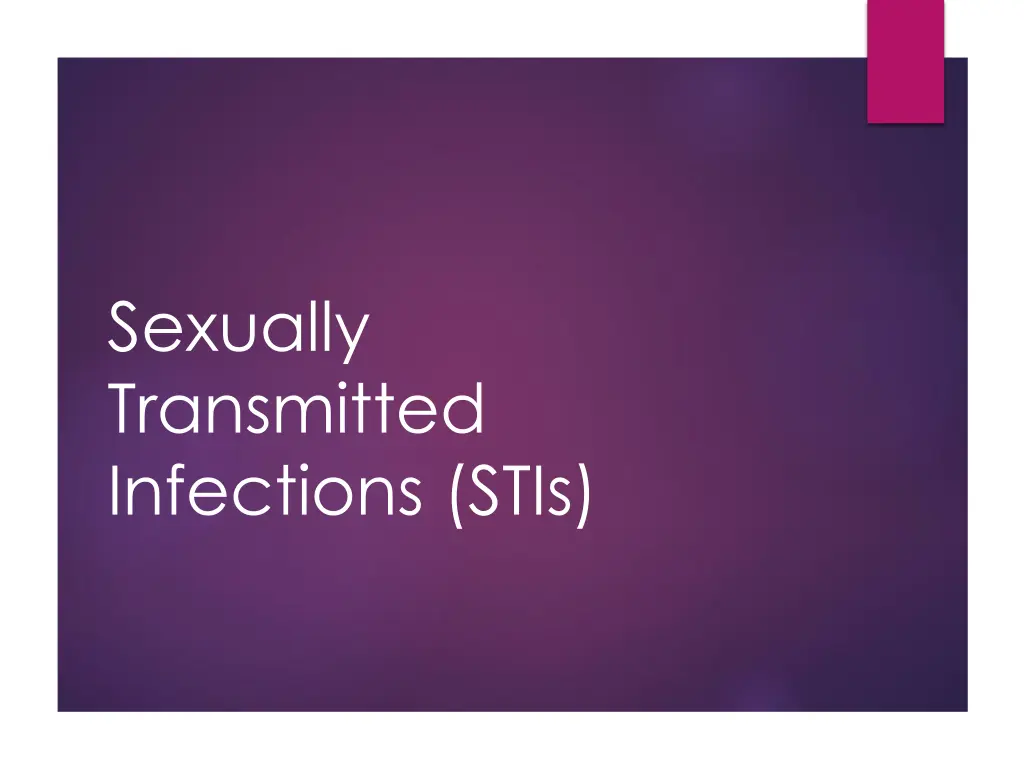
Understanding Sexually Transmitted Infections and STIs
Explore essential information on sexually transmitted infections (STIs), including risk factors, safer practices, common viral and bacterial STIs, HIV/AIDS details, and how HIV is transmitted. Learn about prevention methods, the impact on different demographics, and the significance of regular testing.
Download Presentation

Please find below an Image/Link to download the presentation.
The content on the website is provided AS IS for your information and personal use only. It may not be sold, licensed, or shared on other websites without obtaining consent from the author. If you encounter any issues during the download, it is possible that the publisher has removed the file from their server.
You are allowed to download the files provided on this website for personal or commercial use, subject to the condition that they are used lawfully. All files are the property of their respective owners.
The content on the website is provided AS IS for your information and personal use only. It may not be sold, licensed, or shared on other websites without obtaining consent from the author.
E N D
Presentation Transcript
Sexually Transmitted Infections (STIs)
Risk is Influenced By: Abstinence Monogamy Serial Monogamy monogamy for the duration of a relationship Common in our society/among college students Safer sex Getting tested regularly Using condoms effectively
Range of Practices Safer practices Hugging, kissing, mutual masturbation, autoeroticism Possibly safer practices Vaginal intercourse with condoms Oral sex with condom Anal sex with condom Unsafe practices Vaginal intercourse without condom Oral sex without condom Anal sex without condom Contact or exchange of fluids (blood, semen)
Sexually Transmitted Infections (STIs) 19 million Americans contract an STI every year This is a low number because many go unreported People between 15-24 = most at risk Women more at risk for contracting STIs Often the recipient of penetration = more at risk Women 24 and under may be more at risk due to immature cells of the cervix According to Centers for Disease Control and Prevention (CDC)
Viral STIs Covered in the Course HIV/AIDS Herpes Human Papillomavirus (HPV) Genital Warts (low-risk strains) High-risk strains An easy way to remember: Viral STIs all begin with H
Bacterial STIs Covered in the Course Chlamydia Gonorrhea Syphilis Primary syphilis Secondary syphilis Tertiary syphilis Bacterial Vaginosis (BV)
Human Immunodeficiency Virus (HIV)
HIV Virus that attacks CD4 T-cells and turning them into HIV viruses Transmitted by 4 bodily fluids: Semen 1. Vaginal secretions 2. Blood 3. Breast milk 4.
HIV/AIDS For an HIV-positive person to be diagnosed with AIDS, the following conditions must be present: A CD4 T-cell count below 200 (average is 1,000- 1,500) Presence of an opportunistic infection http://www.ucsfhealth.org/conditions/aids/diagnosis.ht ml
HIV Testing Any local health department Student health services on campus Free, confidential, and sometimes anonymous Tests for antibodies of the virus, which usually appear 2-8 weeks after exposure, but can take as long as 6 months
MSM (men who have sex with men) MSM are the largest growing population of new HIV cases Also largest growing population of new other STI cases See STI Trends materials for current statistics
PrEP and PEP PrEP Info Sheet: prep101-consumer-info.pdf PEP Info Sheet: cdc-hiv-pep101.pdf
Herpes Simplex Virus (HSV): Genital Herpes
What is it? Caused by one of 2 viruses: HSV-1 or HSV-2 HSV-1 usually associated with oral blisters (fever blisters/cold sores) HSV-2 usually associated with genital blisters Main characteristic includes breakouts or blisters. Can be around oral, anal, or genital areas
How Common is HSV-2 Nationwide, 1 in 6 individuals 14-49 years have HSV-2 More common in women (1 in 5 women 14-49) Compared to other STI risk
Transmission Viruses are spread by contact with blisters Can also be spread when blisters are not present Most contagious during ulcerative stage
Signs and Symptoms First breakout appears 2 weeks after transmission Blisters cause burning, itching, feverish sensation around area infected Flu-like symptoms also common during breakouts After 2-4 weeks, sores usually heal A typical year of an infected person includes 4-5 breakouts
Complications of HSV-2 Psychological effects associated with social stigma HIV transmission more likely Pregnancy Cesarean delivery required
Diagnosis Visual inspection and confirmation Swab sample of sores
Treatment No cure for herpes Antiviral medication can shorten and prevent outbreaks (ex. Valtrex) It s about suppression!
Prevention Abstain (especially when blisters are present) Proper use of condoms Condoms only affective when they cover the entire infected area
Human Papillomavirus (HPV)
HPV Is estimated to be the most common sexually transmitted virus Approximately 50% of all Americans will have HPV at some point in their lives (CDC) An estimated 6 million new cases will be diagnosed annually (CDC) It is detected in females via Pap exams There is currently no test for males
Cervical Cancer The American Cancer Society estimates that in 2017, about 12,820 new cases of invasive cervical cancer will be diagnosed. http://www.cancer.org/cancer/cervicalcancer/detail edguide/cervical-cancer-key-statistics According to most sources, 95-100% of women with cervical cancer have HPV
Other HPV-Related Cancers According to the CDC: Vulvar cancer: About 40% are linked to HPV. Vaginal cancer: About 70% are linked to HPV. Penile cancer: About 40% are linked to HPV. Anal cancer: About 85% are linked to HPV. Cancers of the head and neck are mostly caused by tobacco and alcohol, but recent studies show that about 25% of mouth and 35% of throat cancers may be linked to HPV.
Genital Warts Out of the 40 known strains of HPV, some cause warts These are considered low-risk strains This means the likelihood of cancer from these strains is low
Genital Warts AKA, condylomata acuminata According to Mayo Clinic, approximately 5.5 million new infections reported in U.S. every year General characteristics: Small warts (1-2 mm in diameter) Flesh-colored Clusters of warts have cauliflower appearance
Signs/Symptoms of Genital Warts Women Warts grow in vulva, walls of vagina, around anus, neck of uterus, mouth, or throat Men Warts grow on penis (shaft or tip), scrotum, anus, mouth, or throat Both sexes May experience the following: Burning, itching around infected area Pain during sexual intercourse
Diagnosis Many times genital warts are not naturally apparent Doctor may apply an acetic solution to area, which whitens warts, and views them with a colposcope Warts can sometimes be visually apparent Single Cluster formation
Treatment Topical Medications can reduce s/s and future breakouts Chemical treatment (burning off warts) Freezing with liquid nitrogen (cryotherapy) Electrical burning Surgical removal (cut off warts) Laser removal *These methods are used for each incidence*
Prevention Abstain Regular screenings Monogamy Proper use of condoms HPV vaccine*
The Cancer Vaccine Read the information on this link, paying attention to who qualifies: https://www.cdc.gov/hpv/parents/vaccine.html Social taboos and concerns about side effects from a new vaccine have attributed to a low number of vaccinations CDC now calls this the cancer vaccine to encourage vaccination
Bacterial Infections CHLAMYDIA, GONORRHEA, SYPHILIS, BV
Chlamydia Caused by bacterium Chlamydia trachomatis Most frequently reported STI in US Annually over 1 million cases reported to the CDC CDC predicts there is over an additional million + cases unreported Also referred to as a silent STI because over 75% of women and 50% of men infected do not show signs or symptoms
When Signs & Symptoms do Persist: Women Initially infect cervix and urethra, leading to abnormal vaginal discharge and burning while urinating Spreads from cervix to fallopian tubes, leading to lower abdominal pain, low back pain, nausea, fever, pain during intercourse, and breakthrough bleeding Can lead to Pelvic Inflammatory Disease (PID) Spreads from cervix to rectum, leading to pain, discharge, or bleeding
Future Complications in Women PID Infertility Chronic damage to tissues and female reproductive organs Ectopic pregnancies (fetus implants outside uterus)
When Symptoms do Persist Men Discharge from penis or burning while urinating Burning or itching around penis opening * Both sexes can be infected rectally or orally
Diagnosis Urine test Specimen swab of area Routine procedure done at doctor s office or health department
Treatment Can be treated with antibiotics Problem is that signs usually must be present to seek treatment
Prevention Abstain Get tested before engaging in intercourse with new partner Annual Chlamydia screening for women 25 years old or younger Proper condom use Better safe than sorry any signs, get tested!
Gonorrhea Not as many cases reported to CDC, compared to Chlamydia, but co-infections of the 2 are common and often tested together Caused by bacterium, Neisseria gonorrhoeae This bacterium thrives in warm, moist areas Cervix Fallopian Tubes Urethra Mouth, throat Eyes Anus
Transmission All forms of sexual contact Vaginal delivery of babies
Signs/Symptoms Women Mild or no symptoms Often mistaken for bladder infection Initially signs/symptoms Burning during urination Vaginal discharge Breakthrough bleeding
Signs/Symptoms, cont Women Long term effects PID Ectopic pregnancy Infertility
Signs/Symptoms Men Symptoms can take up to one month to appear Burning during urination White, yellow, or even greenish discharge from penis Painful, swollen testicles * If left untreated in either sex, can spread to blood or joints
Diagnosis Swab sample of body (cervix, urethra, rectum, anus) Lab test (gram stain)
Treatment Antibiotics Many drug-resistant strains are increasing Many with gonorrhea also may have Chlamydia, so should get checked for both

